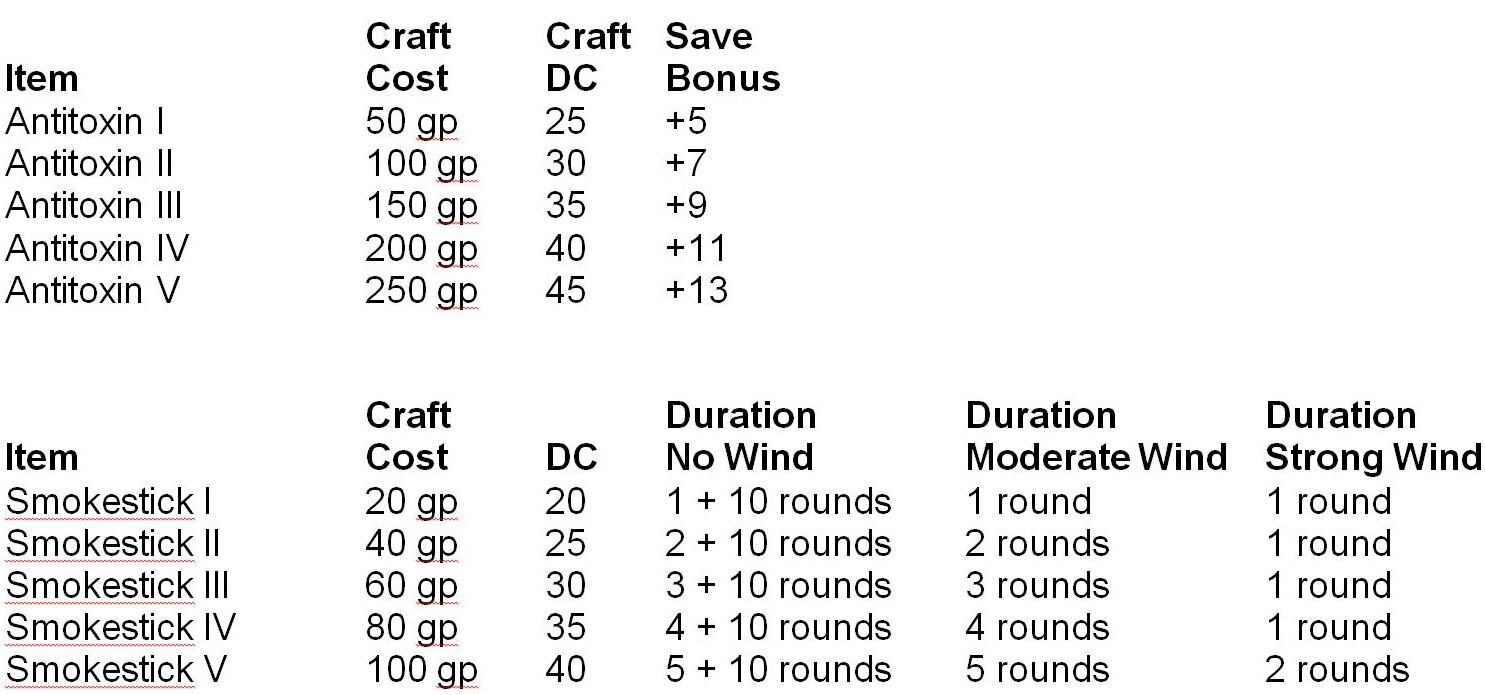Improved Alchemy (OGL v.3.5)
Alchemical substances are among the most fun and intriguing sorts of items readily available to players and, properly employed by the clever or the lucky, can turn the tide of a melee in favor of those using them. There are, however, two shortfalls in the way that alchemical substances are presented in the official D&D rules, one fairly significant and the other much less so, and this article seeks to address them both (here I am talking specifically about the v.3.5 OGL rules, but my point applies more-or-less across the board).
A major limitation of over-the-counter alchemical substances is that they are effectively "0-level magic items" that are most useful to low-level characters and diminish rapidly in value as characters advance. For the most part they cannot be afforded by 1st-level characters, at least not in great quantities, and thus tend to have the greatest practical benefit to characters of 2nd to maybe 4th level. After that, there is a good chance characters will use them little or not at all, and with markedly diminished effect.
A much less obvious shortcoming in the treatment of such substances is that they are presented merely as weapons (and, what’s more, as weapons that are delivered in the crudest possible manner). This makes perfect sense on one level, of course, in that these are the ways that most adventurers would use alchemical substances, but can still be a bit unsatisfying. Even a sentence or two noting that alchemist’s fire, acid, and the like would have any number of peaceful vocational uses and that the ways they are used by adventurers is an exception to the rule (much in the way, for example, that electrician’s tools are repurposed today by “ghosthunters”). Acid in particular is not given much consideration in the official rules and is presented only in terms of the damage it can inflict in melee and is essentially nothing more than half-power Alchemist's Fire (and, accordingly, is priced at half as much).
Addressing the limitations of alchemical substances as strictly low-level items is the main focus of this article, and has been accomplished by giving the single version of each item provided in the Player’s Handbook four increasingly more powerful variants. Increased costs, Craft (Alchemy) skill check DCs, and damage are shown on the tables for each item that appear below. Items that can inflict damage have exponentially increasing cost and those that do not have a linearly increasing cost, to reflect the much greater complexity and volatility of the former items. Weight is of alchemical substances is not generally affected by improvements to them. An improved Alchemist's Lab, however, which requires substantial additions of special equipment, becomes increasingly heavy and bulky.
Recognizing the broader attributes of various substances — especially acid and Alchemist’s Fire — ways other than simply inflicting damage they might be used, and reflecting these things in game terms is a secondary goal of this piece. At the GM’s option, a vial of either one of these substances can be used to provide a bonus to an appropriate skill check. A vial of acid hidden up a rogue’s sleeve, for example, might grant a bonus to an Escape Artist skill check if used to weaken bonds (probably also necessitating a DC 10 Reflex saving throw to avoid taking 1d6 damage). Likewise, a vial of Alchemist’s Fire might be used to burn away the mechanism of a trap and grant a bonus on a Disable Device check. The amount of the skill bonus is a function of the strength of the substance in question, ranging from +2 for a substance of standard strength, all the way up to +10 for one of the highest strength.
One Alchemical item from the lists in the Player's Handbook that does not appear here is the Tindertwig, the characteristics of which do not lend themselves to improvement (at least in the same scalable way as the other items). We are also still sorting out the improvements to the Tanglefoot Bag.
The above levels are those at which an average Alchemist would have about a 50% chance of succeeding at making a batch of a substance or item with the listed target DC. This is thus generally going to be the minimum level for a character from whom such a substance would be available. If your character needs a few vials of standard acid then a 1st-level Alchemist will likely do the trick, but if you want some of the best possible antitoxin then chances are you will need to find a character of at least 13th level and pay accordingly. This can also help GMs decide what substances or items might be appropriate to use as treasure under various circumstances.






